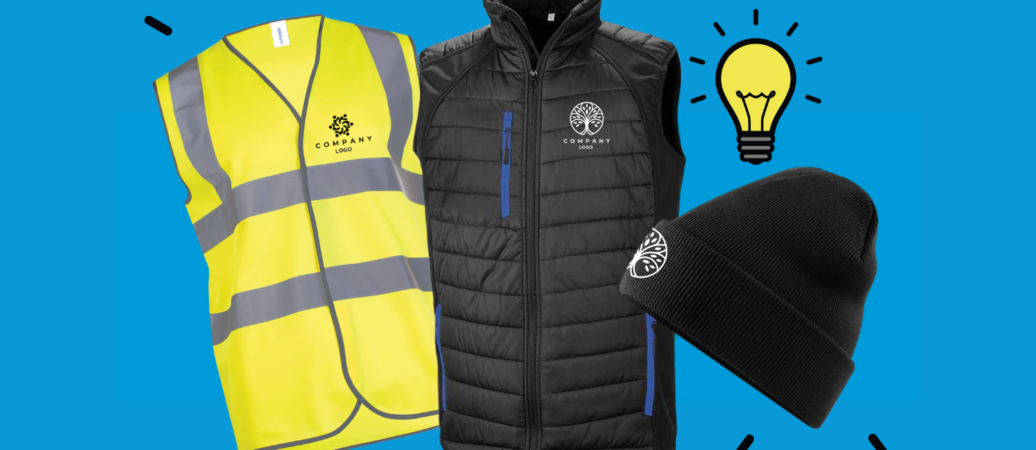A Guide to Choosing Weather-Appropriate Branded Clothing Materials
A Guide to Choosing Weather-Appropriate Branded Clothing Materials
Blog Article
Comprehending Garments: The Significance of Fabric Selections in Your Closet
The choice of fabric in clothes plays a pivotal function in both visual appeals and functionality. Different products provide differing levels of longevity, breathability, and comfort, straight affecting the user's experience. Recognizing these subtleties can enhance one's wardrobe markedly. Yet, lots of overlook just how these selections can affect not just personal style, yet also sustainability. What textile decisions could redefine your closet and align it with both style and obligation?
The Duty of Textile in Style and Functionality

Typical Material Types and Their Characteristics
When selecting clothing, comprehending the qualities of typical fabric kinds is important for making educated selections. Cotton, a widely-used all-natural fiber, is recognized for its soft qualities, adaptability, and breathability, making it ideal for sportswear and day-to-day garments. Bed linen, an additional natural option, boasts excellent moisture-wicking residential properties and a distinct structure, suitable for warm climates.Wool, often preferred for its heat and resilience, differs in excellence; merino woollen is soft versus the skin, while coarser kinds are utilized for outerwear. Artificial materials like polyester and nylon supply longevity and resistance to creases, making them prominent for activewear and traveling garments. Lastly, blends, which incorporate synthetic and natural fibers, can boost functionality while keeping comfort. By acknowledging these textile characteristics, people can pick apparel that straightens with their lifestyle and aesthetic choices.
Breathability and Convenience: Selecting the Right Fabrics for Different Environments
Choosing the ideal materials for numerous environments can significantly enhance comfort and general wearability. Breathable materials are crucial in warm environments, as they permit air flow and wetness evaporation. Fabrics such as cotton, linen, and moisture-wicking synthetics effectively draw sweat far from the body, keeping the wearer cool and completely dry. Conversely, in cooler environments, thicker materials like wool or fleece offer insulation while retaining breathability, making sure heat without overheating.Additionally, the choice of fabric weight plays an important role; light-weight fabrics are preferable for summer season, whereas larger options are suited for winter season wear. Recognizing the one-of-a-kind buildings of each material allows people to clothe properly for varying weather. Inevitably, picking breathable and comfortable materials customized to details environments can significantly improve everyday convenience and enhance the overall experience of wearing apparel.
Longevity and Care: Exactly How Fabric Affects Durability of Your Wardrobe
Selecting the best products can substantially affect the longevity and treatment needs of a closet. Fabrics such as cotton and polyester are known for their strength and ease of upkeep, making them perfect for daily wear. On the other hand, fragile products like silk and shoelace call for more careful handling and specialized cleansing approaches, which can raise the time and initiative required for care. Branded Clothing.Durability is likewise influenced by the fabric's weave and coating; securely woven materials often tend to stand up to wear and tear better than freely woven alternatives. Additionally, artificial blends usually supply boosted resilience, integrating the finest top qualities of several fibers.Understanding the care directions for each and every fabric is important, as inappropriate drying out or washing can result in early wear. Eventually, selecting durable materials can lead to a longer-lasting closet, minimizing the regularity of replacements and adding to a much more sustainable style selection
The Effect of Fabric on Fit and Shape

Lasting Fabric Selections: Making Eco-Friendly Choices
The influence of fabric expands beyond fit and shape to incorporate environmental factors, motivating a growing rate of interest in sustainable material selections. Eco-friendly fabrics, such as organic cotton, hemp, and Tencel, you can find out more are getting grip among customers that focus on sustainability in their closets. These products are often produced with less chemicals and water, decreasing their eco-friendly footprint.Additionally, recycled materials, made from post-consumer waste, use an ingenious option to the textile industry's air pollution problem. Brands progressively welcome openness in their sourcing methods, permitting consumers to make informed choices regarding their purchases.Choosing lasting fabrics not just sustains moral techniques but likewise encourages the fashion business to adopt even more accountable production methods. As awareness of environmental problems climbs, individuals are urged to review the long-term effect of their textile choices, promoting an activity towards a much more lasting and ecologically conscious approach to style.
Boosting Design: Just How Fabric Can Change an Outfit
While many might concentrate on color and cut when picking an outfit, the option of material plays a crucial function in raising design and enhancing overall look. Different materials share distinct state of minds and messages; for instance, silk radiates high-end and refinement, while jeans supplies a casual, kicked back ambiance. The texture and drape of a textile can dramatically modify the shape, with structured fabrics providing a refined appearance and softer ones producing a more fluid, unwinded aesthetic.Moreover, the weight of the material influences wearability throughout seasons. Lightweight textiles like bed linen and cotton are perfect for summer season, while larger materials such as woollen and velour give warmth and sophistication in colder months. Understanding fabric residential or commercial properties, such as breathability and stretch, additionally equips individuals to make enlightened selections that improve comfort without endangering style. Inevitably, the best material can change an attire from average to phenomenal, making it a vital consideration in any kind of wardrobe.
Frequently Asked Concerns
Exactly how Do I Identify the Textile Material of My Clothes?
To recognize helpful resources fabric material, one can take a look at treatment labels, conduct melt examinations for fiber recognition, or get in touch with material examples. These methods assist distinguish products, guaranteeing educated options for garments treatment and maintenance in day-to-day wear.
Can Fabric Choice Affect My Mood or Self-confidence?
Material option can substantially impact a person's mood and confidence. Branded Clothing. Particular products might evoke feelings of comfort or sophistication, while others can feel uncomplimentary or restrictive, inevitably influencing self-perception and psychological well-being throughout the day
What Fabrics Are Best for Sensitive Skin?
For individuals with sensitive skin, natural fabrics like bamboo, bed linen, and cotton are commonly recommended. These products are breathable, hypoallergenic, and much less most likely to trigger inflammation, making them suitable choices for comfort and skin health and wellness.
Exactly how Do I Properly Laundry and Look After Various Fabrics?
To correctly wash and care for different textiles, one need to take into consideration each product's certain demands, consisting of temperature setups, detergents, and drying out methods, ensuring long life and keeping the material's initial top qualities for excellent usage.
Exist Particular Fabrics for Athletic or Efficiency Use?
Sports or performance wear frequently makes use of fabrics such as spandex, polyester, and nylon. These materials are made for moisture-wicking, breathability, and versatility, improving activity and comfort during exercises while offering longevity and support. Alternatively, in chillier environments, thicker materials like woollen or fleece offer insulation while maintaining breathability, ensuring heat without overheating.Additionally, the choice of fabric weight plays a vital role; light-weight fabrics are preferable for summertime, whereas larger choices are suited for winter months wear. In comparison, delicate products like silk and shoelace need even more careful handling and specialized cleaning methods, which can raise the time and initiative required for care.Durability is likewise affected by the material's weave and surface; securely woven fabrics have a tendency to stand up to wear and tear much better than loosely woven choices. In contrast, inflexible fabrics can restrict motion yet give a timeless, sleek look.Moreover, the density and structure of the material can affect the visual assumption of body form. The effect of fabric extends past fit and silhouette to incorporate environmental variables, motivating a growing interest in sustainable material choices. The structure and drape of a material can substantially modify the silhouette, with organized materials offering a sleek look and softer ones developing a much more fluid, unwinded aesthetic.Moreover, the weight of the textile influences wearability across seasons.
Report this page